Wine tasting 101
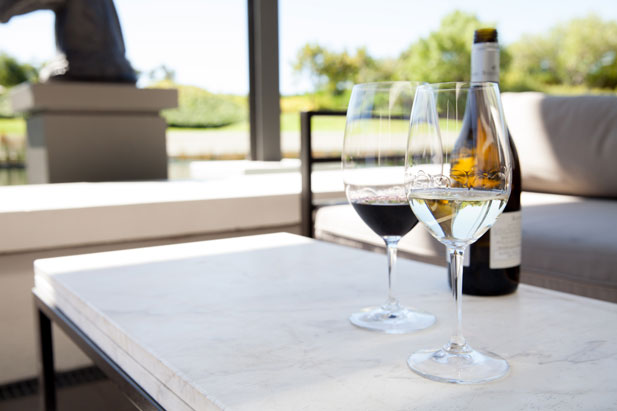
1. Enjoy it
Enjoy wine any which way you prefer. If you like to chill your red, or add Coke to it like the Angolans do, or splash soda into your white with some ice, do it and enjoy. Red wine with your fish and white wine with your steak? Sure, go ahead.
2. Know what you are looking for
To start your wine journey, you need to know what you are looking for. And this is quite easy, it’s sight, smell, taste and feel, the sound part comes in when you clink your glasses and say ‘Cheers’. By the way, glasses were clinked so that a little wine would go into your drinking partner’s glass, just to be sure you hadn’t poisoned his wine – or so urban legend goes.
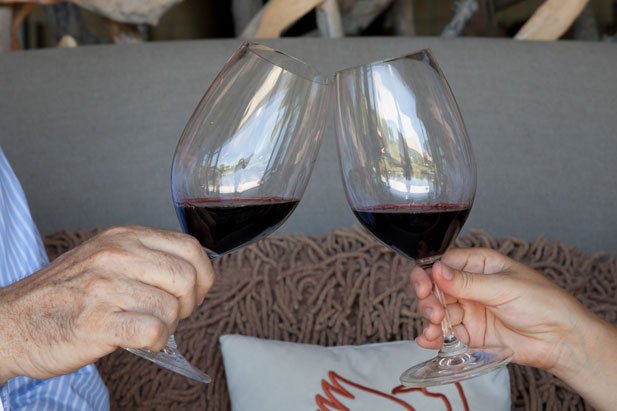
3. The right glass
Look at your tasting glass. Ideally you want a traditional wine tasting glass, one which has a large bowl and is narrow up at the top. This traps the aromas in the glass, but we’ll get to smells. Riedel makes a great tasting glass and if you are going to take this wine tasting thing seriously, get one! In fact, Riedel has a glass for every type of wine. Do you have a favourite teacup? There’s a reason why you choose it – you probably like the way it makes your tea taste. The right glass will help bring out the complex aromas and will ensure the wine lands on your palate so that you get the balance of flavours.

4. Take a look at the wine
Let’s deal with the sight first. Pour a good little splash of wine into the glass and swirl. Have a look at it. Is it bright and clear? Yes? That’s a good start, bright and clear is good, murky is not. Sometimes a wine will have small bubbles in it. This will be if the wine has recently been bottled or if it is a wine meant to be sparkling and it will be labeled pétillant or perlé. Italian wines are sometimes labeled frizzante. There are some lightly sparkling reds, like a Shiraz or an Italian wine called Lambrusco.
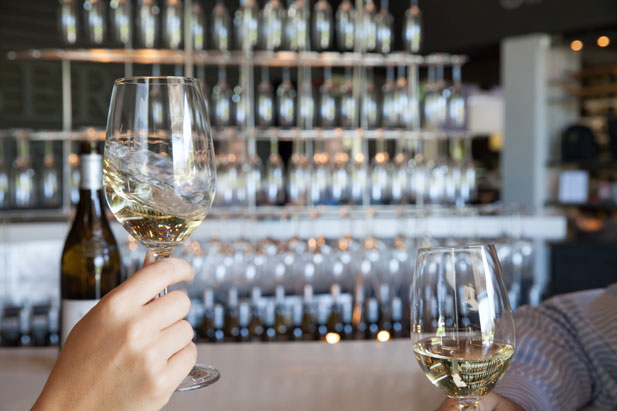
If it is cloudy or has bits floating in it, it’s not good. However if it is a bit of cork, then it may have come off the cork when you opened the bottle. Sometimes you will find little clear crystals at the bottom of a wine bottle, these are called Angel’s Tears and are tartrate crystals which have settled out of the wine and have no effect on the drinkability of the wine. Happy so far?
Now, give your wine a good swirl and look for the wine’s viscosity. If the wine takes it’s time to run down into the glass, then it has a high viscosity. With wines such as this, you might hear people say ‘oh, yes, this wine has great legs’ and what they mean is that it’s probably got a higher alcohol content and is likely to be more full bodied.
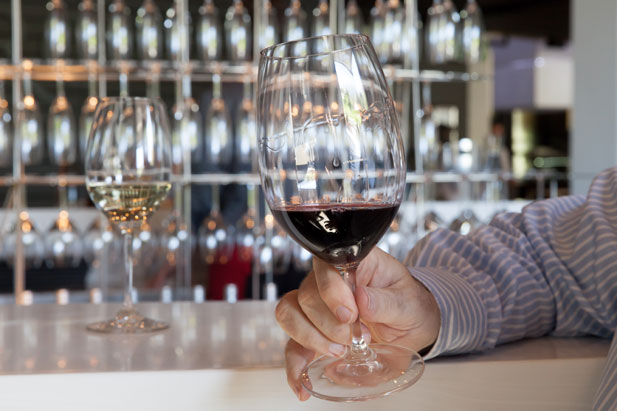
5. Note the colour
Whilst you give your wine a good swirl, take a look at the colour. If your white wine is quite dark, this can be a sign that it’s not a young wine although noble late harvest wines and wooded Chardonnays can be dark too. Red wines will turn a little brown once aged and you may see a little sediment at the bottom of the glass.

6. Give it a good sniff
Now get your nose into the glass. Smell good? All is well. If it does not smell good, and smells off or like a wet dog, then you have what is called TCA in the wine. People say the wine is corked. TCA is reputed to come from the cork in the bottle, but as frequently can be the problem in the cellar and even screw-capped wines are known to suffer from TCA.
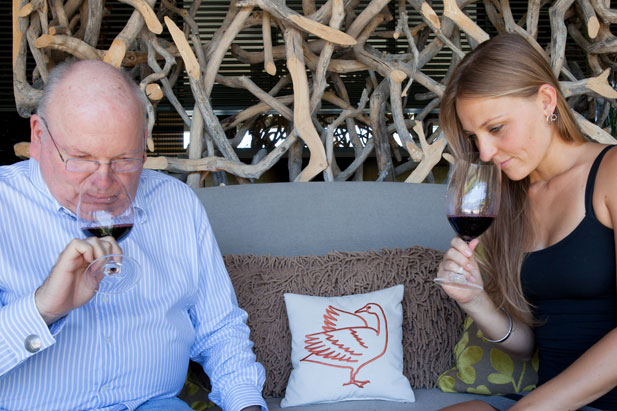
Sometimes wine can be oxidized, a bit like a slice of apple turning brown, or may have turned to vinegar. Once you are happy it is good, then you can start looking for the characteristics of the wine and perhaps even the benchmarks of the grape. The more frequently you taste, and the more widely you taste, the more you will learn about what to look for in a wine.
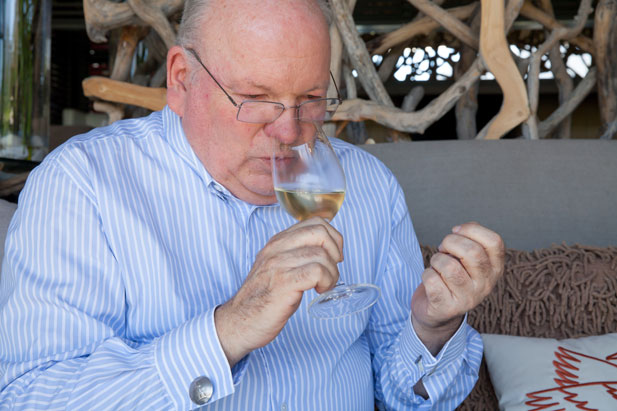
7. Now let’s take our first sip
Don’t take a mingy little mouthful. Go for it and take a good slug. And then wash it around your mouth like when you are rinsing after you’ve brushed your teeth. This way the wine washes over all the parts of your tongue which tastes sweet, sour, bitter and salt. Yes, some wines have a saltiness about them. Sherry particularly which is why it goes so well with salted almonds and olives and tapas. Sometimes wines which grow close to the sea have a delicious kelpy mineral taste to them. You will know immediately if there is a problem. Perhaps the wine is old and over the hill, the fruit will have almost disappeared and the wine will be flat as a result of no acidity. Sometimes, particularly in a young wine, the wine will be very acidic and lean, requiring time for the acid to calm down a bit and give the fruit a chance to shine.
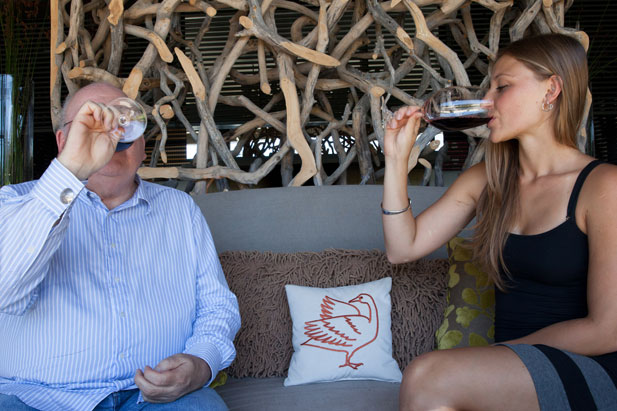
Particularly in a young red wine, the wine might be tannic. Tannins are common in wine and in the case of a young red wine they need time to soften up. If you want to know what tannins taste like, take your used tea bag and pour a little boiling water over it and let it stand and cool off. Taste it. Feel that tongue and gum drying effect? That’s tannin. Most times, when you taste, the wine will be delicious, with a perfect balance between fruit and acidity, and in the case of a wine, white or red which has spent some time in oak barrels, the wood will be evident as well, in support of the fruit and acidity. Now slurp some air through the wine, making as rude a sound as you can – what happens now is that the wine enters your nasal passages where a major part of tasting happens. And now swallow! Bliss as the wine goes down leaving a lovely aftertaste which wanes slowly. You’ve passed the test. Easy wasn’t it?
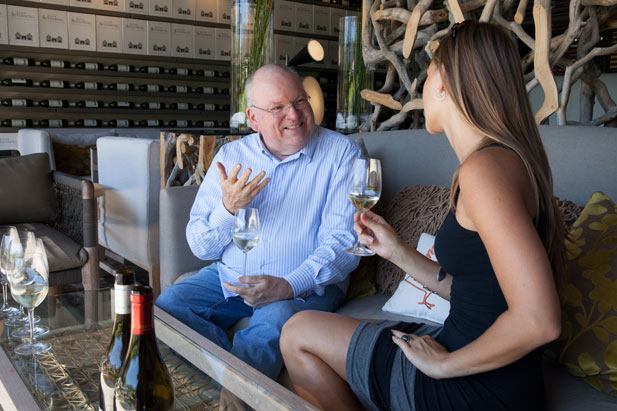
8. Aeration
If you are keen on starting your wine journey, you might like to read up a little on aeration. Aerating your wine can help bring out the aromas and flavours and thereby make picking out specific characteristics a whole lot easier.
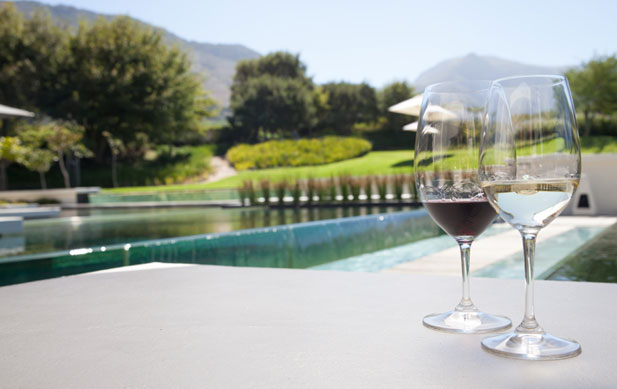
One of the joys of wine is that you will seldom find an off bottle on a shelf in this country. So in summary, give the wine the eye. If it looks good, it is bound to taste good. Now get onto the scent. If it smells clean and fruity, it is probably good too. Give it the first tasting, big mouthful, slurp some air through it and swallow. If all those work for you, then pour yourself a glass and settle back and enjoy it.
